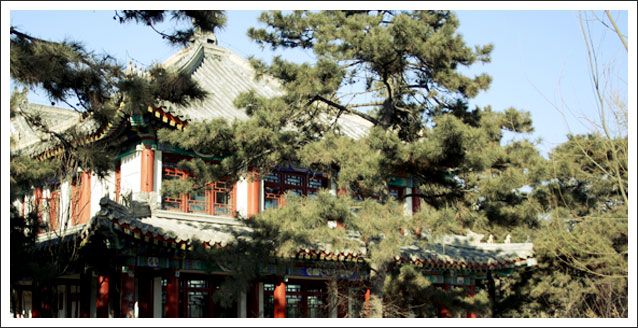文物保护
体斋 健斋 全斋Tizhai,Jian zhai and Quan zhai Buidings
时间:2017-07-26 03:12:00 来源:作者:陈楚汉等 摄影:

体斋 健斋 全斋Tizhai,Jian zhai and Quan zhai Buidings
文物时间:1920-1929,1998年修缮体斋、健斋
文物位置:未名湖北岸
文物类别:建筑遗迹
Time: 1920~1929
Location: On the north bank of the WeiMing Lake
Category: Architectural relic
岁月变迁
体斋、健斋、全斋曾经为燕京大学青年教师的宿舍,现在体斋、健斋是国际访问学者的公寓。全斋是一些年轻的助教们及其家属居住地。
风格特征
体量雄浑,气势开敞。体斋小巧玲珑,健斋高大雄伟。
建筑特色
体斋和健斋坐落在德才均备四斋的东面,体斋小巧玲珑,是一个两层的八角亭形状,健斋紧挨着体斋,比体斋高大、雄浑有力,在两斋之间有一个回廊和台阶,使两者更显得亲密无间。体斋和健斋不仅在文物形象上是一阴一阳、一刚一柔,而且在两个斋的空间上也显示出了脉脉含情的美。
在体斋和健斋的后方(北边)就是全斋。全斋不像其他几个斋一样是两层小楼式的古典文物,而是一座低矮的院落,由于处于体斋和健斋的后方,不为人注意,所以相比之下全斋显得陈旧古老。
文物缘起
1920年由钱穆先生建议将七座斋楼分别命名为“德才均备体健全”。这七个斋的名称带有浓厚的中国文化色彩,是学校对自己学子的要求和希望,同时也体现了教育的方向和人才标准。
体斋:为海克尼(Hackley)姊妹(赫女士)纪念其父所捐;
健斋:加上校墙,为北京、天津两地的中国实业家所捐。
德才兼备四斋加上体斋和健斋当时为燕大男宿舍一、二、三、四楼以及湖滨甲楼、湖滨乙楼,
历史溯源
在这两斋之间的绿地边树立着一块大石碑,其上铭文彰显着体斋健斋两斋的历史:
“The David Parkard Parilion The Board of Directors of the David and Lucice Parkard Foundation wishes to congratulate Peking University on the occasion of its 100 anniversary. To mark this important milestone in the great progress and in recognition of David Parkard admiration of Peking University,the foundation sponsor the restoration and interior renovation of Ti Zhai and Jian Zhai to creat the David Parkard International Faculty Residence Parilion. ”
(大卫?帕卡德国际访问学者公寓 值此北京大学百年华诞,大卫及鲁西尔?帕卡德基金会董事会谨表示祝贺。为彪炳北京大学巨大发展中这一重要里程碑,并表示大卫?帕卡德先生对北京大学的景仰之心,基金会捐资修缮体斋、健斋,大卫?帕卡德国际访问学者公寓乃成。谨志之。一九九八年五月四日。)
History
Tizhai, Jianzhai, and Quanzhai buildings were used to be the dormitory of young teachers of Yenching University. Now Tizhai and Jianzhai are served to international visiting scholars as apartments. While Quanzhai is used as apartment of young teaching assistants and their family.
Distinguishing feature
These buildings have a forceful and open momentum. While Tizhai is relatively small and exquisite, Jianzhai is great and tall.


